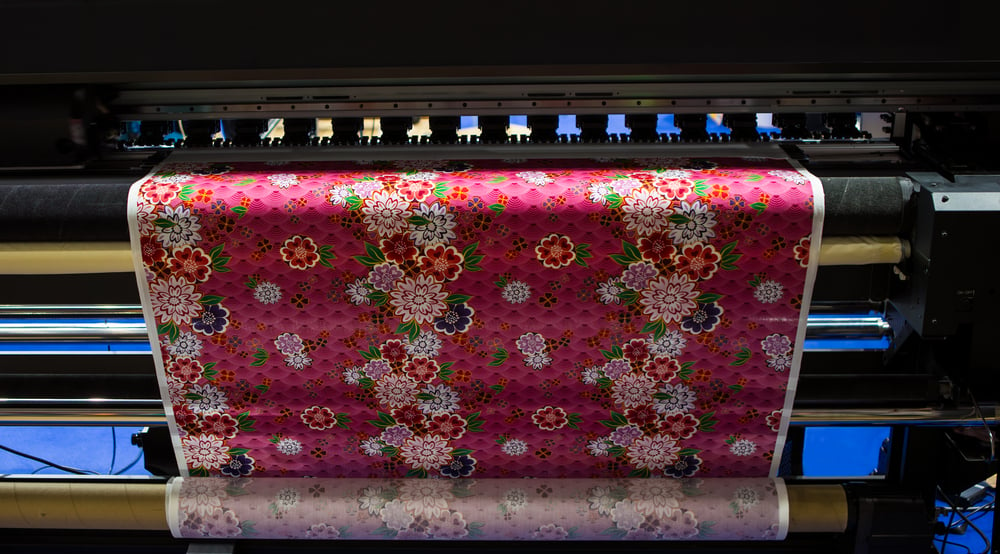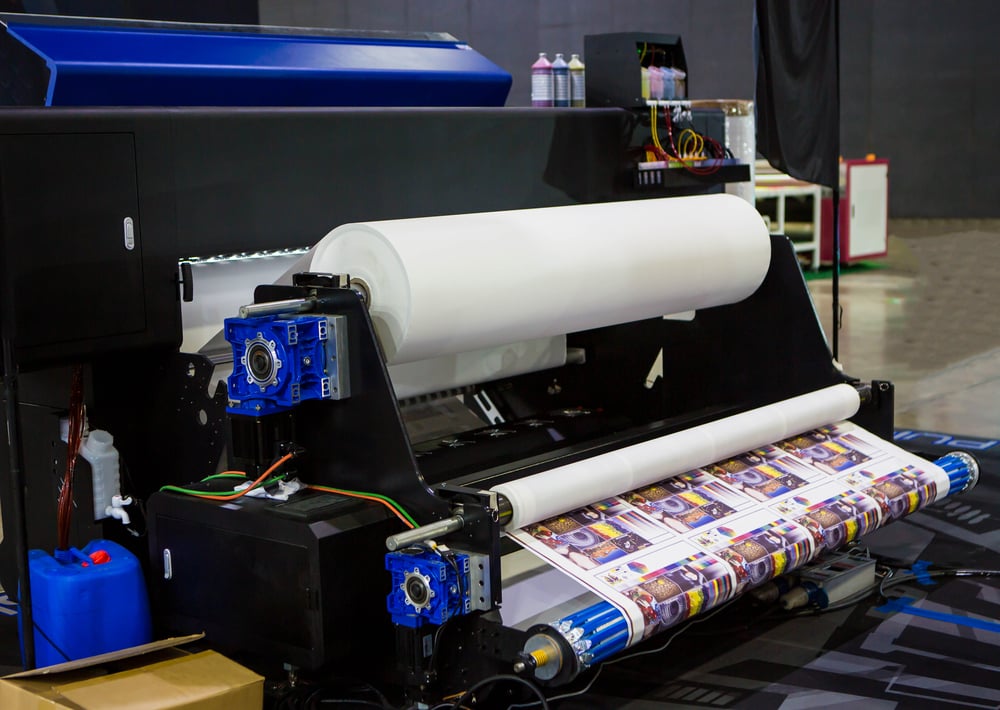
Dye sublimation printing is a widely-used method for creating top-notch prints, especially suitable for low-volume production runs. This digital printing technology is known for its cost-efficiency, yielding durable and enduring prints while saving on expenses. Additionally, dye sublimation produces prints that are highly resistant to fading, ensuring their longevity, which has made it a favoured choice for a wide range of printing applications.
The principle behind dye sublimation transfer hinges on the behaviour of heat sublimation ink. When this ink is heated to a specific temperature, the dye undergoes a transition from a solid to a gaseous state.
As the temperature cools down, the dye reverts to a solid form and embeds itself into the surface of the fabric being transferred, creating the desired design.
This process is highly effective, ensuring that colours and patterns remain vibrant and intact even after numerous washes. Furthermore, because the design becomes an integral part of the fabric, the finish is both silky and flexible.
Dye sublimation printing also enables the creation of intricate, original, and imaginative graphics, making it an excellent choice for producing detailed and creative designs.

Sublimation inks are utilised to print designs onto paper or film. The process involves placing a backing against the substrate and using a heat press to join them, applying heat to trigger the transformation of solid ink into a gas. This gaseous ink then permeates the substrate, reverts to a solid state, and becomes molecularly embedded in the substrate.
Sublimation printing is versatile and applicable to various substrates, including apparel, signs, trade show materials, and promotional products like keychains and coffee mugs. Specifically:
This method offers a broad spectrum of creative possibilities for personalisation and customisation across various materials and applications.
Dye sublimation offers a versatile and accessible solution for high-quality, full-colour printing on various surfaces while allowing for complete customization and quick production. Its advantages include:
Dye sublimation printing is a popular method for producing high-quality, full-color prints on various materials, including fabrics, ceramics, and plastics. However, like any technology, it has its disadvantages and limitations. Here are some disadvantages of dye sublimation printing:
In summary, dye sublimation stands out as a top-tier printing method, offering exceptional quality and versatility. It provides a reliable and cost-effective means to produce vibrant and long-lasting prints suitable for a wide array of applications, spanning from apparel to signage. In particular, its adaptability to various fabrics and extensive customisation options has fuelled its growing popularity in the workwear industry. In brief, dye sublimation emerges as an excellent choice for workwear, delivering a host of advantages for both employees and employers alike.
Unlock 5%! Subscribe & Save
Copyright © Cheap as Prints 2025
We use cookies to enhance your experience. By continuing, you agree to our Privacy Policy.
Select which cookies you want to allow:
Save 5% on your order when you subsribe to our newsletter.